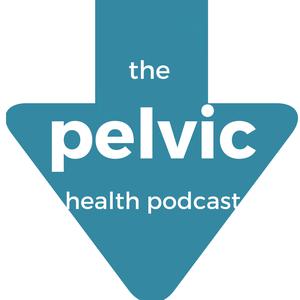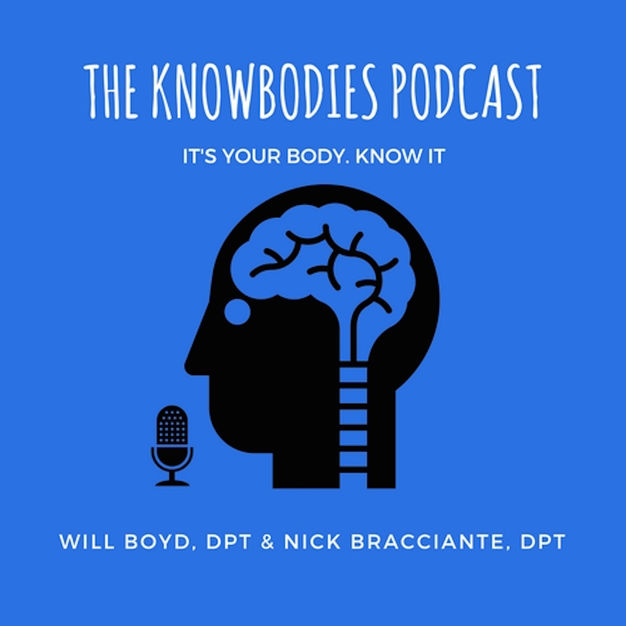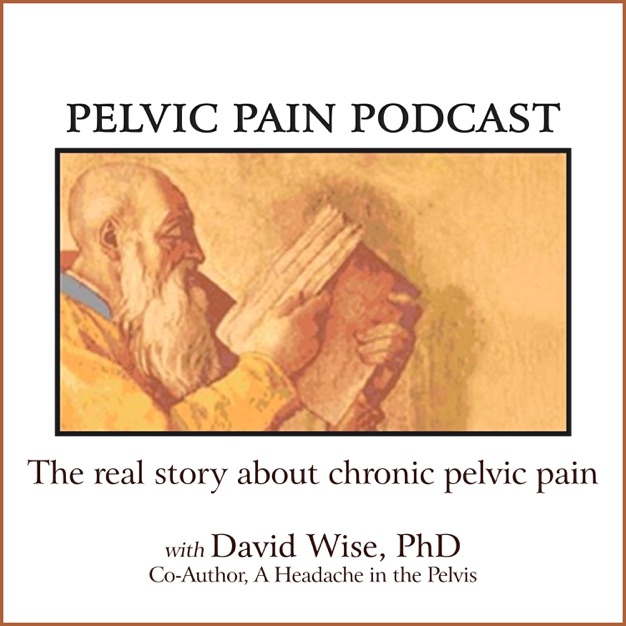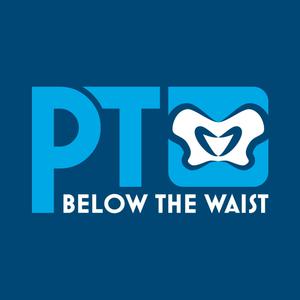
Tough to Treat
Susan Clinton and Erica Meloe
Welcome to Tough to Treat: A Physiotherapists’ Guide to Managing Those Complex Patients, with your hosts Erica Meloe and Susan Clinton, who discuss how they successfully treated patients that others could not. Via case history discussion, they share their physical therapy expertise from treating long standing pelvic pain to persistent neck pain. They present a holistic and integrative view on assessing and treating chronic pain. Unique movement strategies and specific patient exercise prescription are also presented so you can be ahead of the curve when it comes to treating these types of patients. Oftentimes, the source of the problem is not where you think it is!! For example, chronic low back pain emanating from the neck. Or hip pain coming from the foot. It pays to look up and down the kinetic chain!
- 28 minutes 17 secondsBuilding Better PT Practices: Courses, Clinical Reasoning, and Mentoring Insights
In this episode, we answer the most common questions we get from listeners. We dive into course recommendations, highlighting resources for continuing education, mentoring and evidence-based practices.
A key focus is on clinical reasoning strategies—how to approach complex cases and integrate patient-specific factors into your decision-making. We also discuss the value of spending the majority of your first session taking the patient’s story.
Your patients will make you a better physical therapist, if you listen to them. Be curious and let it lead you towards mastery.
A glance at this episode:
-
[2:27] Courses and Continuous Learning
-
[12:11] Starting the Podcast and Building a Community
-
[13:17] Mentorship and Clinical Reasoning
-
[19:10] Treatment Sessions and Client Engagement
-
[22:56] The Role of Patients in Clinical Learning
-
[26:41] Reflecting on the Year and Planning for the Future
Related links:
28 November 2024, 12:19 am -
- 47 minutes 31 secondsComplex shoulder pain - how the narrative and red flags paint a different picture
Clients self-refer for many reasons and we find ourselves on the front line of health care screening. Join Susan and Erica as they uncover key elements in a client's history and narrative around long-standing shoulder pain. Simplistic presentations usually mask true underlying considerations including the client's beliefs and red flags.
A glance at this episode:
-
[1:41] Client's Initial Presentation and History
-
[4:07] Exploring Past Injuries and Chronic Bike Riding
-
[6:56] Impact of Corporate Life and Breast Cancer on Health
-
[13:08] Concerns About Bone Health and DEXA Scan
-
[15:21] Addressing Left Shoulder Pain and Movement Dysfunction
-
[17:51] Implementing Modified Exercises and Pilates
-
[39:28] Discussing the Power of the Narrative and Patient Advocacy
-
[40:13] Connecting Patient Goals to Treatment Outcomes
-
[45:17] Final Thoughts and Episode Closing
Related links:
7 November 2024, 9:00 am -
- 43 minutes 2 secondsShoulder Pain With Pull Ups or Push Ups? The Elbow Changes Everything
In this episode, we explore the surprising journey of a boxer battling chronic shoulder pain that left him struggling to do even the most basic workout. Despite focusing on his shoulder, it turns out the root of his problem lay elsewhere—his elbow. Is that surprising? It was in his injury history. Do not discount the power of an old injury that could come back and haunt you. And think about the load on the elbow when you're doing a push or pull-up. Join us as we clinically reason through this interesting case from start to finish.
A glance at this episode:
-
[0:01] Introduction and Patient Background
-
[7:03] Initial Assessment and Observations
-
[11:56] Exploring the Root Causes
-
[14:12] Addressing the Pull-Up Challenge
-
[32:06] Implementing Exercise Program
-
[36:32] Final Thoughts and Key Takeaways
Related links:
24 October 2024, 8:00 am -
- 38 minutes 35 secondsChronic Knee Pain - Where to Begin!
Susan and Erica are back together for the Fall season! Chronic knee pain can be much more than a regional event. Susan presents a client with an extensive timeline and clinical reasoning as to why it is important to consider the entire system in this integrated approach. The key here is also maintaining relevance and sustainability for the client.
A glance at this episode:
-
[1:18] Explanation of Episode Structure and Content
-
[2:59] Introduction to the Client Case Study
-
[5:30] Client's Medical History and Injuries
-
[12:47] Initial Assessment and Observations
-
[13:33] Treatment Plan and Initial Intervention
-
[31:02] Follow-Up and Client Feedback
-
[31:17] Advanced Treatment and Future Plans
-
[31:31] Conclusion and Encouragement for Listeners
Related links:
10 October 2024, 8:00 am -
- 22 minutes 12 secondsAssessing Knee Health For Hip-Related Walking Pain
In this episode, Erica explores the often-overlooked relationship between hip pain and knee function during walking when the patient does NOT have knee pain. Join in as she dives into the role of the knee in compensating for hip dysfunction, and how a thorough knee assessment can uncover hidden contributors to hip discomfort. Remember: old injuries have a way of sneaking up on us and becoming one of the drivers of our current problem. An old hamstring tear 5 years ago as a contributor to this patient's problem? Think again.
A glance at this episode:
-
[2:23] Patient Background and Injury History
-
[3:46] Assessment and Initial Findings
-
[6:33] Knee and Hip Mechanics
-
[10:11] Terminal Knee Extension and Treatment Approach
-
[20:43] Clinical Reasoning and Patient Outcome
-
[20:58] Conclusion and Call to Action
Related links:
26 September 2024, 8:46 pm -
- 33 minutes 12 secondsWhen shoulder pain is dominant, but not the driver!
Shoulder pain, like any other joint can present as primary pain and can be the #1 reason a client may be seeking help! In many cases, treating the obvious joint dysfunction (because it checks all of the boxes) may not result in optimal outcomes. Join the conversation as Susan and Erica explore the various reasons and important timelines in the client's history that has led to her shoulder pain. Most importantly follow the clinical reasoning that led to the real driver of this issue. Bonus - we also offer a great discussion of a good exercise progression!
A glance at this episode:
-
[1:39] Shoulder pain and internal rotation
-
[7:52] Which side of the table should you work from
-
[12:40] Learning to tape the wrist
-
[20:00] Opening the hands
-
[22:46] Using the blocks for yoga blocks
-
[27:58] Grip strength as a sign of health
Related links:
12 September 2024, 8:00 am -
- 21 minutes 3 secondsBeyond Tennis: Exploring Shoulder Compression Across Sports
In this episode, Erica discusses the why behind shoulder problems, comparing the unique challenges faced by tennis players and non-tennis players alike. She explains why traditional shoulder treatment often fails these types of patients. A significant relationship between the shoulder and another region of the body is often missed. Erica also tells the story of one of her patients who does play tennis and the reason why he can do a full pushup but can't lift his arm over his head. For our physio listeners, oftentimes you can progress patients through a full range of CKC exercises but the OKC piece does not progress as quickly.
A glance at this episode:
-
[0:01] Erica's Summer Vacation and Introduction to the Episode
-
[2:30] Clinical Pearls for Tennis Players
-
[6:15] Assessing Upper Thorax and Glenohumeral Joint Compression
-
[12:53] Treatment Approach for Upper Thorax and Glenohumeral Joint Issues
-
[15:54] Progressing Patients with Glenohumeral Issues
-
[16:14] Clinical Pearls for Closed Chain Exercises
-
[20:37] Conclusion and Encouragement for Practitioners
Related links:
5 September 2024, 8:00 am -
- 36 minutes 14 secondsA Stiff 1st MTP Joint can Affect Everything!
One of the most overlooked joints in the lower quarter is the first MTP joint unless that is the client's primary complaint. How does the stiffness of the MTP joint affect gait and lower quarter movement of all kinds? We spend some great time discussing differential diagnosis and practical interventions and sharing some new discoveries. Hint: the exam and intervention do not always center around the stiff 1st MTP - there is likely a primary driver elsewhere.
A glance at this episode:
-
[0:01] Introduction and Podcast Rebroadcast
-
[2:13] Overview of Stiff First MTP Joint
-
[4:21] Compensation and Adaptation
-
[6:30] Assessment and Treatment Approaches
-
[23:22] Exercise and Proprioception
-
[25:47] Shoe Recommendations and Adaptations
-
[34:17] Conclusion and Final Thoughts
Related links:
29 August 2024, 3:04 pm -
- 52 minutes 27 secondsFencer with Bilateral Calf Pain
What is the cause of bilateral calf pain in this young fencer? From start to finish, it shows the power of a thorough evaluation, a specific exercise progression, and a return to the sport she loves. When it comes to exercise progression in persistent pain, think about context. How can you improve optimal movement patterning by changing the context? Think about this one. You can intervene via the visual system, eyes open, eyes closed. How about changing their base of support? Wide to narrow. And why not have them do their exercises to their favorite music? These are just some examples. Look at your patients through a different lens and then see positive change.
A glance at this episode:
-
[0:01] Introduction and Case Overview
-
[7:46] Initial Assessment and Clinical Reasoning
-
[10:27] Hypermobility and Initial Treatment
-
[20:14] Progression and Additional Techniques
-
[32:40] Advanced Techniques and Future Plans
-
[52:04] Conclusion and Reflection
Related links:
22 August 2024, 8:00 am -
- 41 minutes 34 secondsThe Role of the Diaphragm in Chronic Low Back Pain and GI Dysfunction
How similar are the neuromuscular responses to pain with Chronic low back pain and GI pain? Join Susan and Erica in a great discussion of the role of the diaphragm and how this changes with pain and inhibiition/over-recruitment in the system. In chronic low back pain and abdominal bloating/distention the diaphragm becomes a postural control muscle which greatly limits the respiratory ability and is an ineffectual model for spine stiffness and visceral organ pusher. This is an excellent discussion following the podcast episode 185.
1) Kolar P, Sulc J, Kyncl M, Sanda J, Cakrt O, Andel R, Kumagai K, Kobesova A. Postural function of the diaphragm in persons with and without chronic low back pain. J Orthop Sports Phys Ther. 2012 Apr;42(4):352-62. doi: 10.2519/jospt.2012.3830. Epub 2011 Dec 21. PMID: 22236541. 2) Villoria A, Azpiroz F, Burri E, Cisternas D, Soldevilla A, Malagelada JR. Abdomino-phrenic dyssynergia in patients with abdominal bloating and distension. Am J Gastroenterol. 2011 May;106(5):815-9. doi: 10.1038/ajg.2010.408. Erratum in: Am J Gastroenterol. 2011 Jul;106(7):1405. PMID: 21540894. 3) Sicilia-Gomez C, Fernández-Carnero S, Martin-Perez A, Cuenca-Zaldívar N, Naranjo-Cinto F, Pecos-Martín D, Cervera-Cano M, Nunez-Nagy S. Abdominal and Pelvic Floor Activity Related to Respiratory Diaphragmatic Activity in Subjects with and without Non-Specific Low Back Pain. Diagnostics (Basel). 2022 Oct 18;12(10):2530. doi: 10.3390/diagnostics12102530. PMID: 36292219; PMCID: PMC9600311.
A glance at this episode:
-
[0:01] Diaphragm function, GI dysfunction, and postural control
-
[7:51] GI dysfunction and its impact on abdominal wall muscles and posture
-
[13:39] Abdominal dysfunction and diaphragm movement in relation to chronic low back pain
-
[20:36] Treating chronic low back pain through abdominal wall retraining
-
[25:09] Abdominal wall deficit and diaphragm dysfunction in chronic low back pain patients
-
[32:07] Treating gas and bloating through diaphragm therapy
-
36:32] Treating GI dysfunction through breathwork and positioning
Related links:
15 August 2024, 5:49 pm -
- 48 minutes 12 secondsHypermobility and Low Back Pain
How do you rehab someone who is VERY hypermobile and suffers from persistent low back pain? Carefully and specifically! This episode highlights the beauty of a specific exercise progression tailored to the patient's meaningful movement. Listen as we go through the clinical reasoning process to determine what types of movement patterns will work and what ones won't. Doing the right thing at the right time is clinical expertise.
A glance at this episode:
-
[5:13] Hypermobility and pain management for a 24-year-old woman
-
[11:26] Hypermobility, muscle imbalances, and control issues in a patient with back pain
-
[19:00] Shoulder subluxation and its relation to past injuries and yoga practice
-
[23:57] Diaphragm recruitment in back pain patients
-
[27:47] Addressing short girl syndrome in a dancer
-
[32:03] Using tape and Pilates equipment to improve abdominal strength and stability for a hypermobile patient
-
[35:51] Improving posture and flexibility through exercises on a reformer machine
-
[39:23] Exercises for a spin instructor with tight hip flexors
-
[43:34] Exercises for hypermobile individuals to improve motor control and recruitment
Related links:
8 August 2024, 8:00 am -
- More Episodes? Get the App
Your feedback is valuable to us. Should you encounter any bugs, glitches, lack of functionality or other problems, please email us on [email protected] or join Moon.FM Telegram Group where you can talk directly to the dev team who are happy to answer any queries.
 Pain Science and Sensibility
Pain Science and Sensibility
 The Pelvic Health Podcast
The Pelvic Health Podcast
 Two Knowbodies Talking
Two Knowbodies Talking
 Pelvic Pain Podcast|The Real Story About Chronic Pelvic Pain
Pelvic Pain Podcast|The Real Story About Chronic Pelvic Pain
 PT Below The Waist
PT Below The Waist
 In Your Pants with Dr. Susie G
In Your Pants with Dr. Susie G